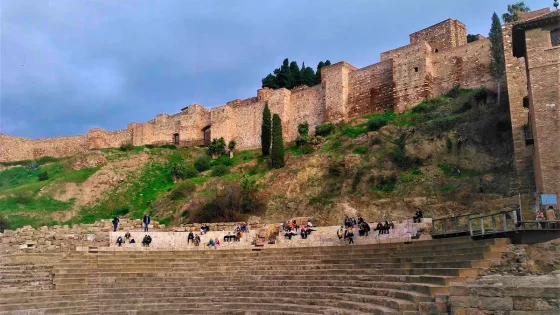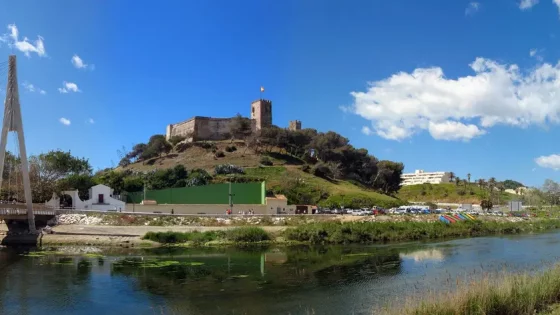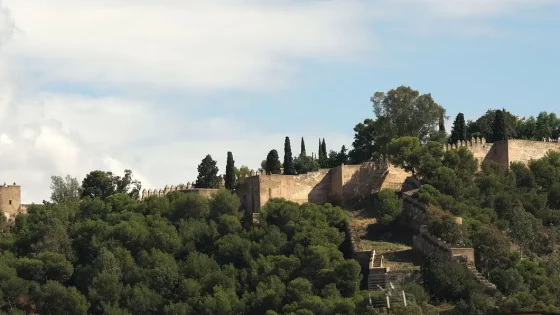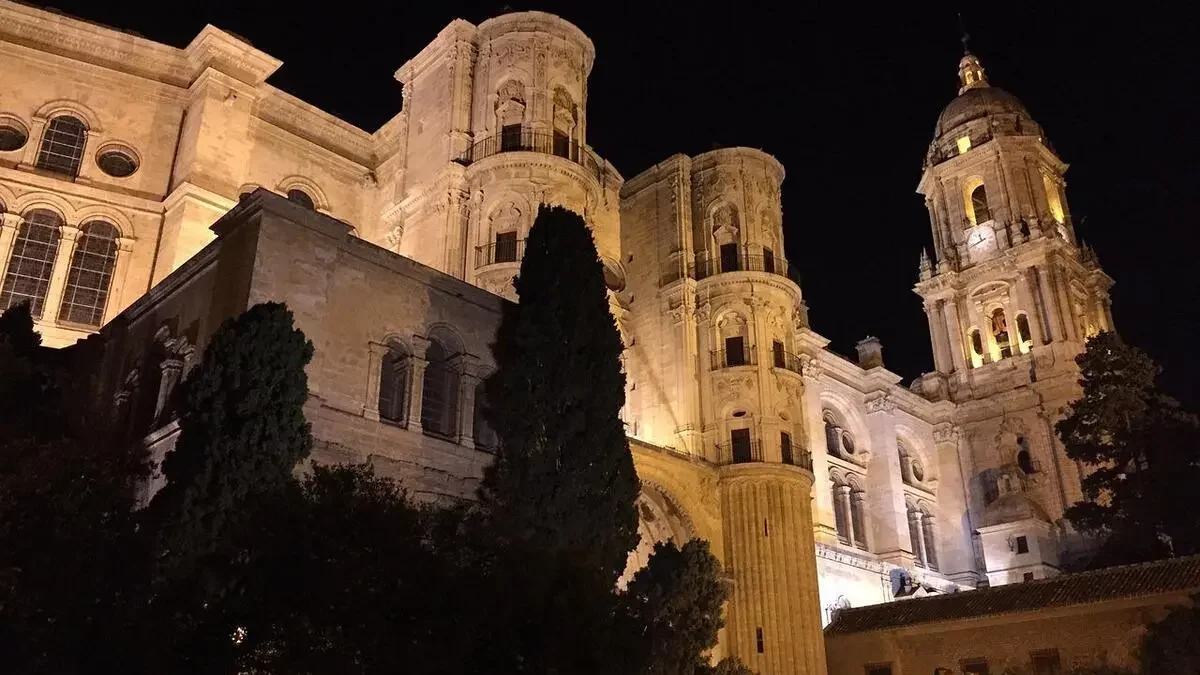
The city of Malaga, situated on the shores of the Mediterranean sea, holds many jewels inside it, with Malaga Cathedral (Catedral de Málaga) being one of its best-preserved treasures. This is due to the fact that it has been a crossroads of cultures for centuries, including the Phoenicians, Romans, Arabs and Christians, all leaving their mark on the city’s architectonic heritage.
This is one of the signature monuments of Malaga’s skyline, with a structure that is clearly recognisable from a distance. Located in the heart of the city and with a Renaissance style, this temple still preserves Gothic, Baroque and Mozarabic elements.
Hence, what is known as Malaga’s Cathedral of the Incarnation (Catedral de la Encarnación) receives the full name of Holy Cathedral Church Basilica of the Incarnation of Malaga (Santa Iglesia Catedral Basílica de la Encarnación de Málaga), although locals affectionately call it ‘La Manquita’ which literally means ‘one armed’ because of an architectonic detail that makes it unique in the world and that we will mention in the sections below.
Malaga’s Cathedral is one of the must-visit monuments for visitors to the city, which is easily reached with a hire car from Malaga airport. Being situated in the historic quarter, it cannot be accessed directly by car, but you can park in a nearby car park.
Table of Contents
History of Malaga Cathedral (Catedral de Málaga)
Malaga’s Cathedral of the Incarnation is one of the most varied and fascinating architectonic examples of the city’s history. It is nationally-renowned as one of the touchstones of Spanish Renaissance.
Its history is directly related to the era of the city’s Muslim rule, since this religious monument was built on what was once the Grand Mosque, situated in the heart of the city. It was vitally important for the government of that era, since the religious temples had to be situated in recognisable places and accessible to make it easier for people to come and pray.
Origin of Malaga’s Cathedral of the Incarnation (Catedral de la Encarnación)
Malaga’s Cathedral dates back to 1497, in the context of the Christian reconquest of the kingdom of Al Andalus, which lasted in Spain for eight centuries. Once the city was conquered, the Catholic Kings ordered this Christian temple to be built over the Grand Mosque as a main measure in forming the government of Malaga, since they considered it to be essential in starting to evangelise a population that had spent the last eight centuries under Arab influence.
Since it was built on top of the mosque, the dimensions did not allow for a Gothic cathedral to be built, which would have been more in line with the predominant style at the time of its construction. This is why they opted for a Renaissance style. Construction began in 1487 and lasted for 60 years, although it was then stopped, spending another 200 years with the chevet being the only part that was built. Work restarted two centuries later and a major difference is apparent between the classic Renaissance and modern Baroque.
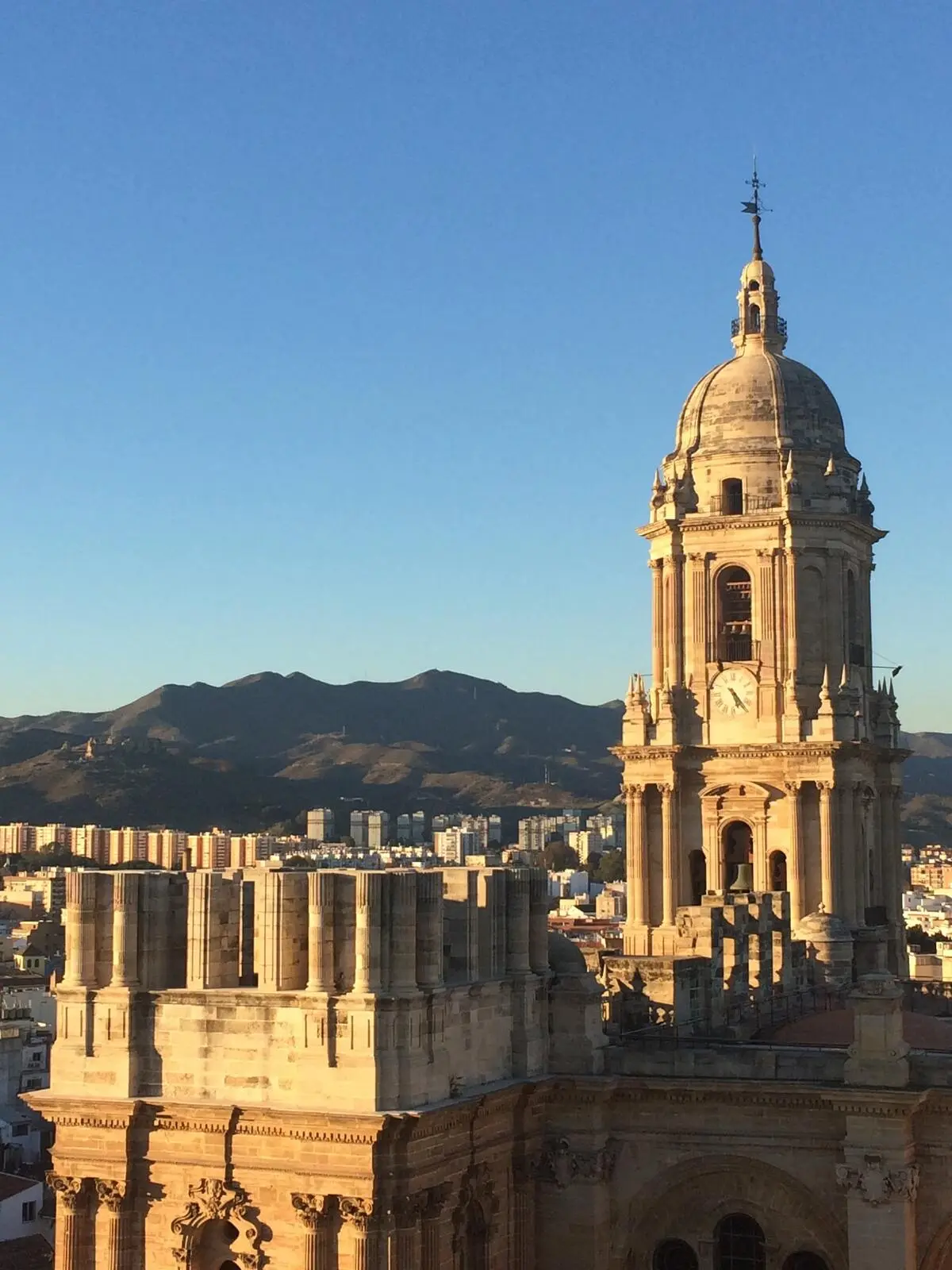
However, nowadays, Malaga’s Cathedral of the Incarnation still retains incomplete elements in its construction, with the structure of the south tower, the central arch, the gable roof and the southern façade all still to be finished. It is thanks to this architectonic feature, which is so visible in comparison with the north tower, which is 85 metres high, that locals call Malaga Cathedral ‘La Manquita’ which literally means ‘one armed’. Since this is such a characteristic trait, the people of Malaga are against the work being completed to keep this monument unique.
The Cathedral’s façade, a mix of styles and cultures
The construction of Malaga Cathedral (Catedral de Málaga) at different times in history means that if you walk around it, you will find different architectonic styles on its façades. So although the main façade is fenced, opposite the famous Plaza del Obispo, it wasn’t designed like this, although it is the most contemporary part with a Baroque style.
However, it was the south facing façade that was originally built as the main one. On it, known as the Puerta del Sol, you can see Renaissance architectonic motifs, such as a semi-circular arch on the door, similar to the one found on the façade on the opposite side, situated in calle Císter and called Puerta de las Cadenas.
On the other hand, the north side features a Gothic style door, belonging to the Sagrario Church (Iglesia del Sagrario) and stands out from the rest thanks to its rich content of religious iconographic motifs, a simple way of evangelising a largely illiterate public and formed by ancient Christians and Arab converts. On it you can see the apostles, God the father, the virgin or infant Jesus among others.
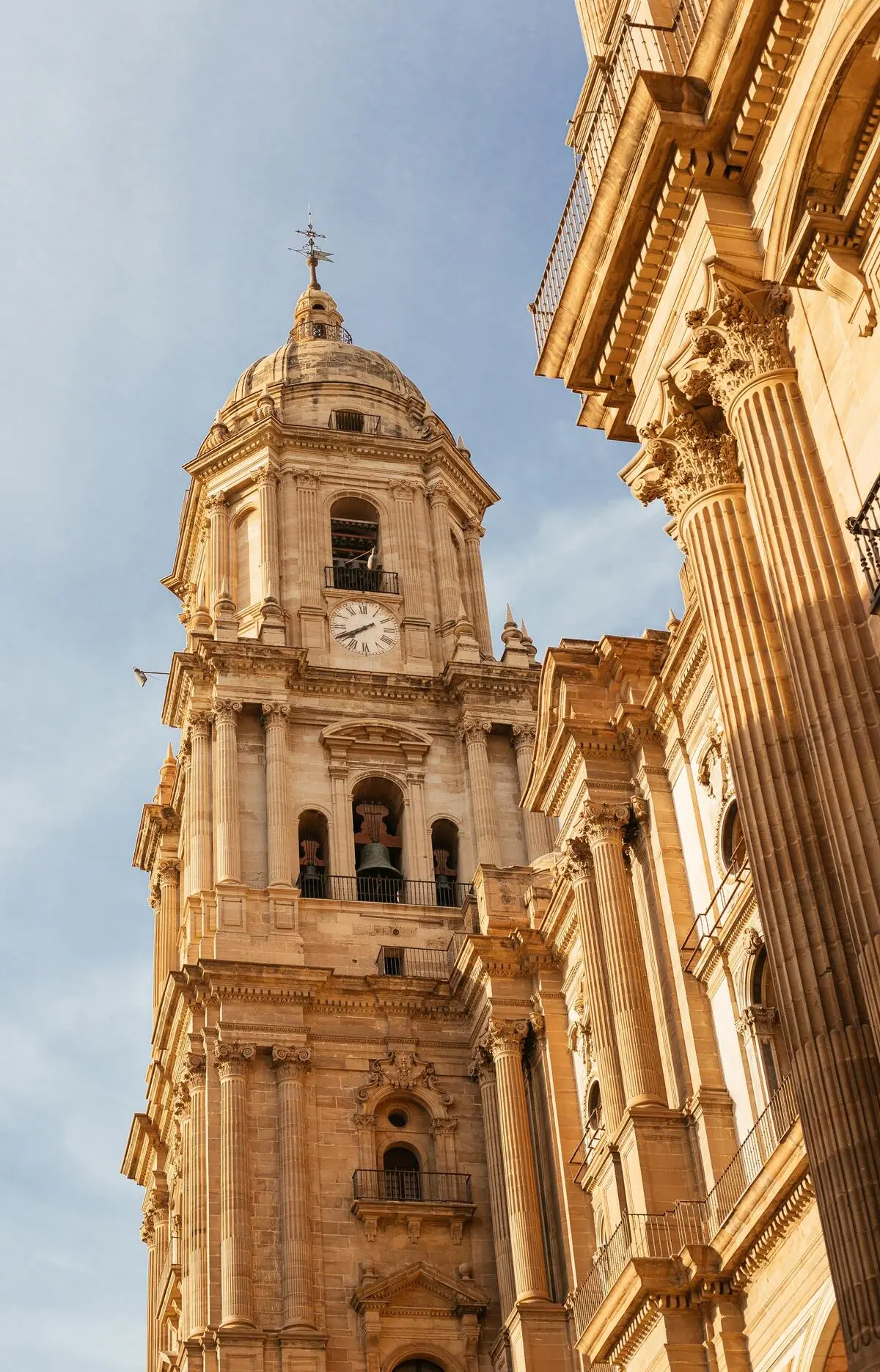
This façade features the only preserved remains on the exterior of the ancient mosque, a section of grey bricks situated next to this entrance and which is even more visible inside, specifically in the vestry, something that visitors are not able to see.
The main medallion of the current entrance to Malaga Cathedral (Catedral de Málaga) is crowned by the image of Archangel Saint Gabriel’s annunciation to the Virgin Mary and both sides feature Saint Paula and Saint Ciriaco, two young martyrs from the Malaga of the Roman Empire after being tortured to death in the name of renouncing their faith and worshipping the Pagan Gods. Since then, they have been named patron saints of the city.
How do you access the inside of Malaga Cathedral (Catedral de Málaga)?
There are two different itineraries to visit the inside of Malaga’s Cathedral of the Incarnation. On the one hand, you can visit for free as a tourist from 9am until 10am from Monday to Thursday for the general public, while the tourist opening hours with paid entry are as follows:
Monday to Friday: From 10 am to 7pm
Saturdays: From 10am to 6pm
Sundays: From 2pm to 6pm
The entrance fee at this time ranges between 3 and 6 euros, the latter price being the general price with concessions for young people, OAPs, groups and students. All of these entrance fees include an audio guide which describes the details of the cathedral.
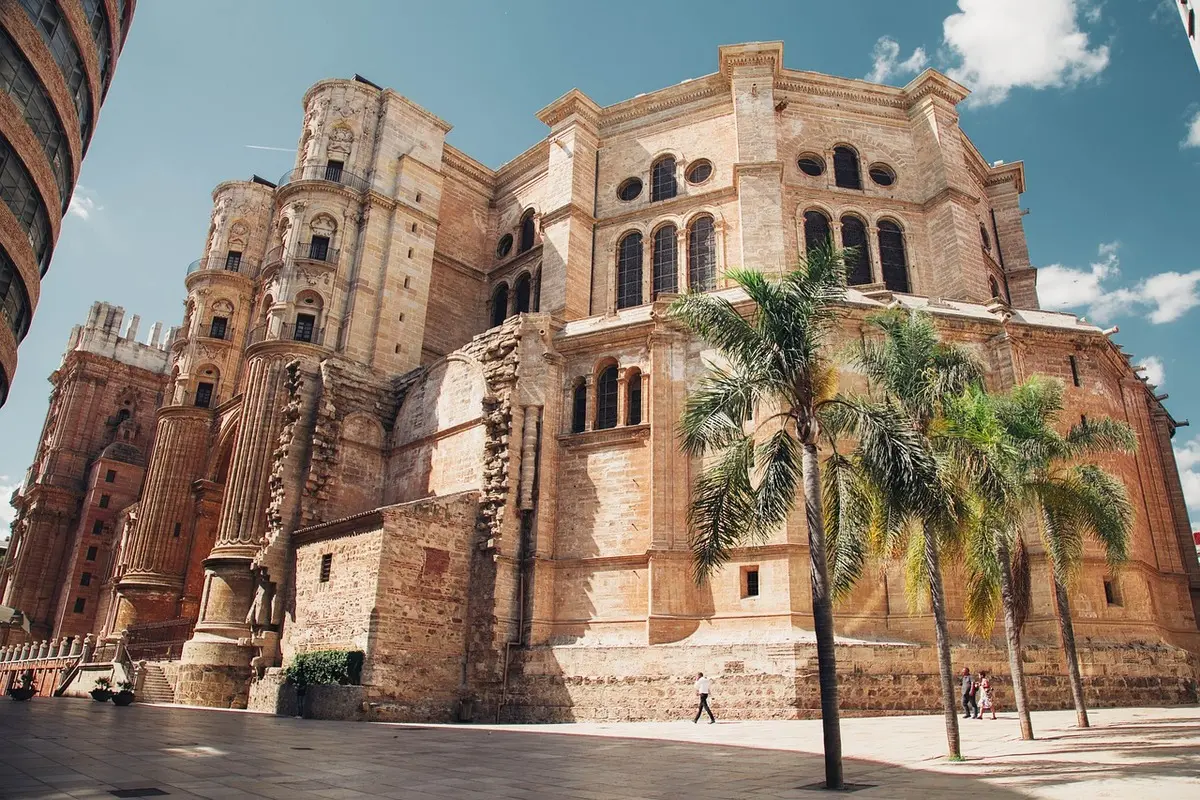
Other popular itineraries are the climb to the rooftop of Malaga Cathedral, from which visitors can enjoy spectacular panoramic views of the city. These visits can take place during the day for the same price as the entrance to the cathedral, or by combining both visits at a general price of 10 euros. The concessions mentioned above also apply.
The rooftops can also be visited at night for a fixed price of 10 euros, enjoying an idyllic atmosphere to get the best photos of the city and port. To be able to climb up to the rooftops of the Cathedral of the Incarnation, visitors have to climb the 200 steps of the north tower, so it is not accessible for all.
How do you get to Malaga’s Cathedral of the Incarnation (Catedral de la Encarnación)?
Malaga’s Cathedral of the Incarnation is situated in the historic quarter so visitors will be able to reach it easily using public transport from any point in the city via bus, with a plethora of combinations possible at a general price of €1.40.
On the other hand, the city centre can also be accessed by commuter train from other nearby towns including Torremolinos, Fuengirola or Benalmádena using line C1, stopping at Málaga-Centro Alameda.
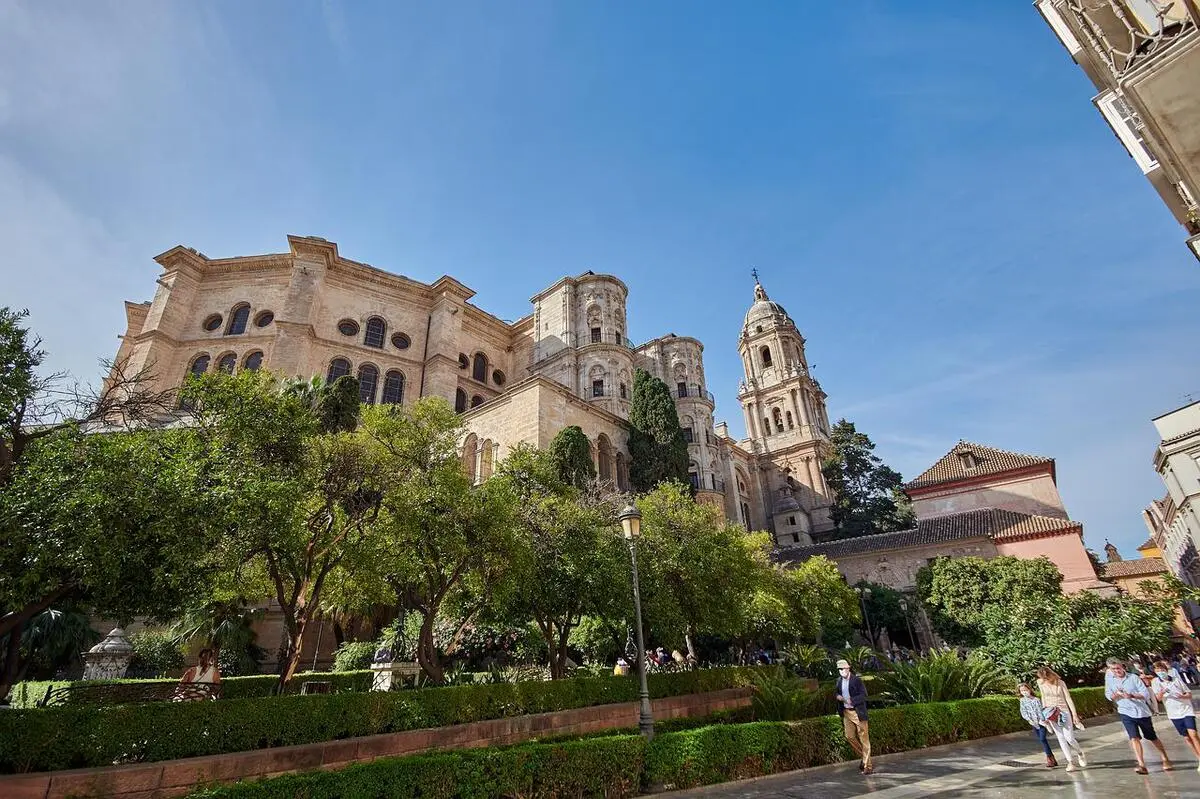
Another option is the metro with the closest stop being located at María Zambrano station. From there, visitors will be able to reach the centre in 20 minutes. Don’t forget the option of reaching the centre by car, finding reasonably priced car parking in the centre of Malaga.
Parking near to Malaga Cathedral
Parking for free near to the Cathedral of the Incarnation is complicated, although visitors can find areas regulated by the SARE parking system, where they will need to find the machines nearby to get a ticket for their vehicle with a specific duration for the stay, bearing in mind that these areas are free on Saturday evenings and Sunday.
You can also find several car parks near to Malaga Cathedral:
Central Cark park. More widely known as the Marina car park since it is situated in the square of the same name, this is the closest car park, a mid-point between the Cathedral, the port and Malaga’s Alcazaba. It is situated in Plaza de la Marina, 5.
Underground parking. You can find this car park closer to the popular Larios street (calle Larios), it is the nearest one to the city’s historic quarter and situated in Calle San Juan de Dios, next to the McDonalds restaurant.
Parkigrund. This is possibly the cheapest option given it is situated a little further away from the city’s historic quarter. It is situated in the modern Soho district, full of bars and picturesque venues and will enable visitors to reach the Cathedral by taking a walk along the famous Malaga Boulevard (Alameda de Málaga).
Car park at the Alcazaba. Situated at the foot of the Alcazaba and next to Picasso’s birth place, this car park is easy to access and you can easily reach all of the points of interest in the city centre from there.
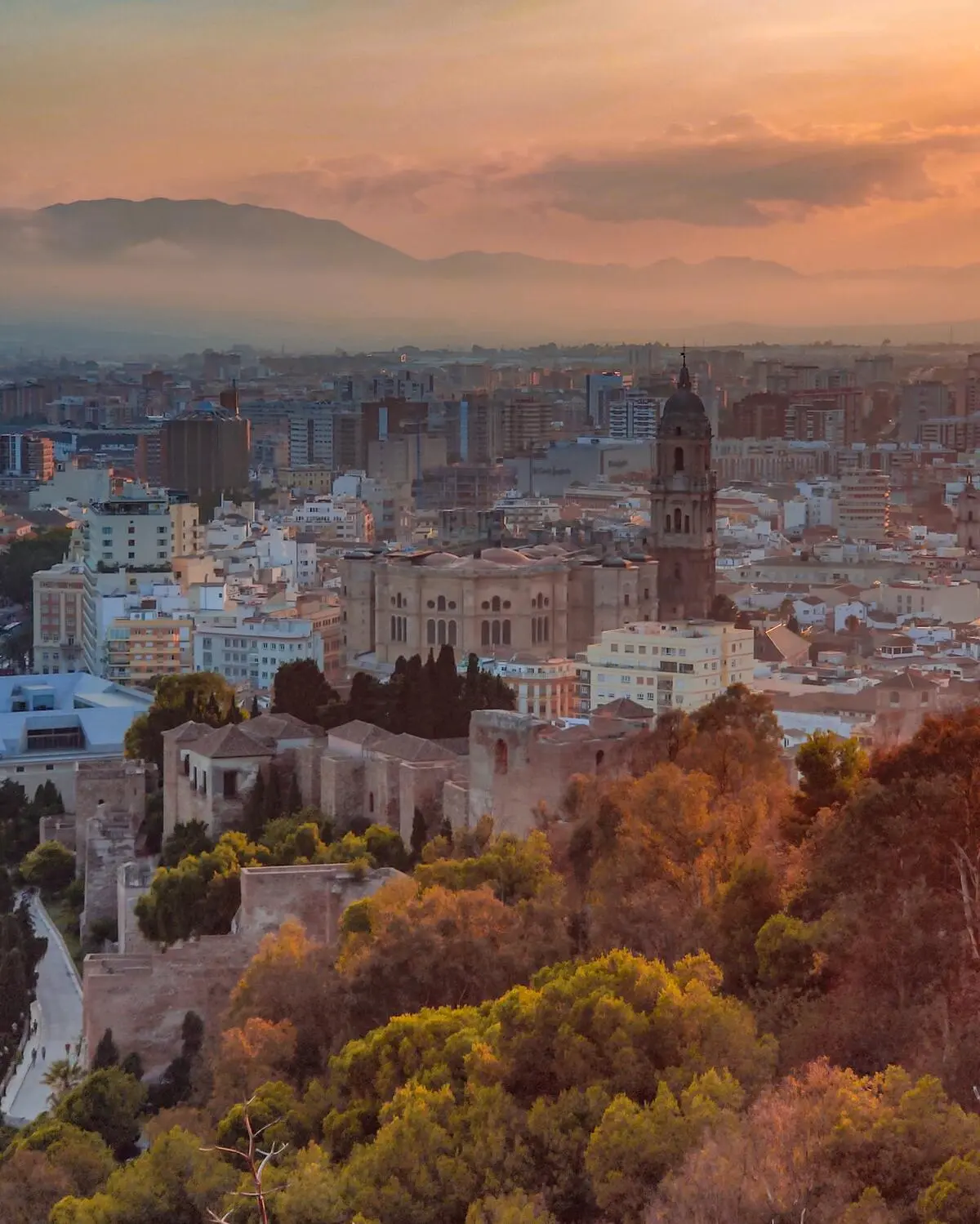
Parking at Malaga Airport. If you are coming from outside the city and want to avoid the complexity of parking in central Malaga, you can use our CarGest parking and take the train from the airport, which will drop you off right in the city center.
Apartments near to Malaga Cathedral
Visitors who decide to stay in the centre will be able to find a wide range of apartments near to Malaga Cathedral, since the city’s hotel offer in this area is plentiful and of a high quality.
However, if you are looking to travel on a budget, tourist-rented homes are a great alternative which, combined with Malaga’s tapas bars will enable you to enjoy the city in a different and cheaper way.
Where is Malaga’s Cathedral of the Incarnation (Catedral de la Encarnación)?
Malaga’s Cathedral of the Incarnation is situated at Molina Lario, number 9, the city’s main focal point. Those who want to visit this monument will be able to walk to other iconic elements of the city, such as the Alcazaba, Roman Theatre (Teatro Romano), El Pimpi Winery (Bodega El Pimpi) or Pablo Picasso’s birthplace (Casa Natal de Pablo Picasso).

